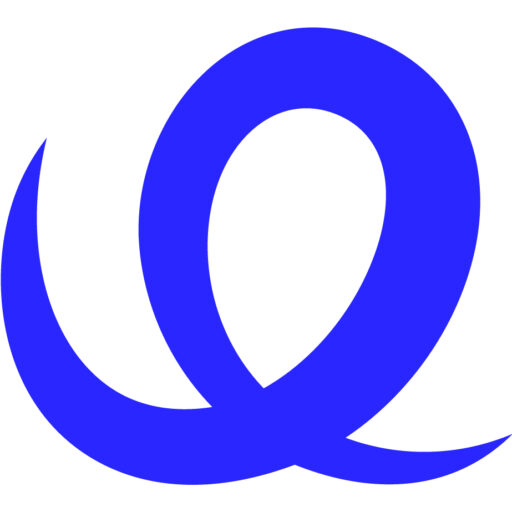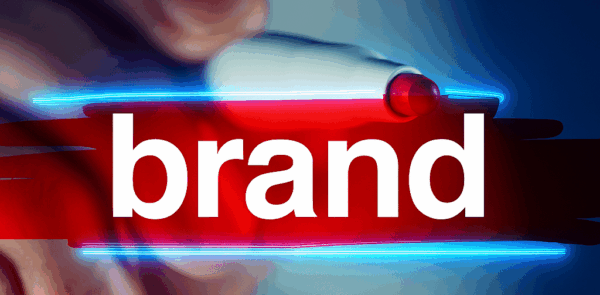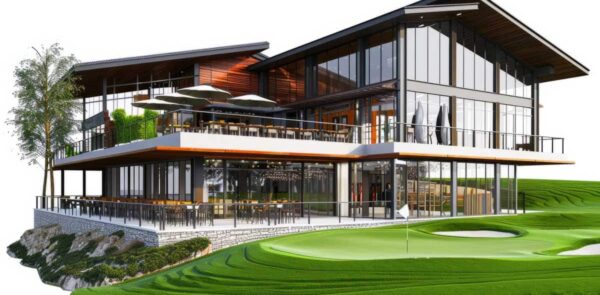
Table of Contents
Wine is experiential, yet most buyers meet your brand through a screen long before they smell or sip. That gap is an opportunity. Brand videography lets us translate terroir, craft, and hospitality into a visceral narrative that prospects can feel in seconds. When the story lands, you earn a tour, a club signup, or a cart add even before a cork moves.
Digital discovery for wine has gone visual and mobile. A buyer flips from a restaurant’s list to Instagram, checks a winery page, and makes a decision in under a minute. If your brand lacks motion, you’re asking static images and long paragraphs to do a sensory job. That’s a losing bet against creators who show rather than tell.
At the same time, video supply is abundant. Quality and relevance differentiate. Audiences reward authenticity, crisp pacing, and concrete takeaways like tasting notes, food pairings, and visit planning. Over‑produced gloss without substance underperforms, especially with younger drinkers who expect transparency and craft cues.
Finally, budgets are accountable. Videography must earn its keep in measurable outcomes: DTC lifts, club retention, and trade sell‑through. That requires tight briefs, channel‑specific edits, and a measurement plan that goes beyond views and likes. The table below frames the realities we plan around.
- Mobile‑first — Design shots and captions for vertical, thumb‑scrolling contexts.
- Proof over polish — Elevate craft and clarity; avoid empty cinematic tropes.
- Outcome discipline — Tie content to commercial moments on your calendar.
| Force | Implication | Operational Response |
|---|---|---|
| Short‑form dominance | Hook in 2–3 seconds | Cold opens with action, not logos |
| Creator competition | Authenticity wins | Feature winemaker & vineyard team |
| Attribution pressure | Prove revenue impact | Shoppable links + UTM governance |
Flavor‑First Story Architecture: From Terroir to Glass
Flavor stories work best when they follow a clear arc. We anchor each video to a single tension—What makes this Pinot different? How does fog shape acidity? Why does this block produce darker fruit?—and resolve it with sensory proof. That structure gives viewers a reason to care and a handle to remember.
We keep the language concrete. Instead of “elegant and expressive,” show the hand sorting, the gentle punch‑downs, or the fog line rolling through in the morning. Instead of “balanced oak,” show barrel choices and toasting while the winemaker explains the impact on mouthfeel. A dozen seconds of specific craft beats a minute of vague adjectives.
We also plan for modularity. The same shoot yields a 60‑second reel, a 2–3 minute release film, a 15‑second cut for ads, and a 20‑second tasting room loop. Modular storytelling turns one production day into weeks of channel‑ready content.
- One tension — Pose a concrete flavor question that the video answers.
- Show the proof — Capture the process steps that shape aroma and texture.
- End with a next step — Taste note, pairing, or link to buy or book.
| Arc Stage | Purpose | Typical Shot | On‑Screen Cue |
|---|---|---|---|
| Cold Open (2–3s) | Hook curiosity | Macro pour or vineyard movement | “What fog does to acidity” |
| Context (5–8s) | Set terroir/process | Block map & soil close‑up | “Block 7, marine layer daily” |
| Proof (10–20s) | Show craft choices | Sorting, punch‑downs, barrel toast | “Gentle extraction → silkier tannin” |
| Sensory (6–12s) | Translate to taste | Macro legs, aroma scene, palate words | “Red cherry, rose, sea spray” |
| CTA (3–5s) | Next step | Label + link or map to tasting | “Book a tasting | Shop vintage” |
Pre‑Production: Creative Briefs, Compliance, and Shot‑Planning
Great wine videos start in the brief, not the edit. We define the audience, the single flavor tension, the must‑capture processes, and the commercial action. We map locations by light and noise, and we sequence shots around real cellar work so crews don’t interrupt fermentation or bottling.
Compliance belongs in pre‑production. We align claims to approved tasting notes and avoid anything that implies health benefits or irresponsible consumption. We plan age‑gating for paid placements where required and ensure disclaimers travel with assets for trade use. This upfront rigor saves days in review cycles.
Finally, we plan modular outputs. Every scene lists aspect ratios, thumbnail options, and caption hooks for each channel. When camera rolls, the team captures alternates so the editor can deliver platform‑specific cuts without costly reshoots.
- Brief the flavor — One sentence that ties craft choice to sensory outcome.
- Lock compliance — Approved language, disclaimers, and age‑gating requirements.
- Shoot for ratios — 9:16, 1:1, and 16:9 variants planned at the shot list level.
| Section | What It Covers | Owner | Approval Gate |
|---|---|---|---|
| Objective & Audience | DTC, club, trade, or tourism | Marketing | Brand Lead |
| Flavor Tension | Craft choice → sensory outcome | Winemaker | Compliance |
| Must‑Have Shots | Process, people, place, product | Producer | Winemaker |
| Outputs & Ratios | Reels, YouTube, site, trade deck | Editor | Marketing |
Production: Vineyard‑to‑Cellar Capture Without Disruption
Production in a winery must respect farming and fermentation. We schedule around vineyard light, cellar noise, and safety. Early morning delivers diffusion over vines; late afternoon gives warm tones on barrels and tasting patios. We mic winemakers and vineyard leads properly to avoid noisy re‑takes, and we capture natural sound for authenticity.
We aim for lightweight crews with prime lenses for macro detail: skins during crush, CO2 fizz, lees stirring, and glass texture as wine sheets down. We build redundancy into data management because harvest footage cannot be recreated. Establishing shots are helpful, but tactile close‑ups carry the sensory load.
On talent, we let craft leads be themselves. A concise prompt—“Show me how you judge the punch‑down”—yields real gestures and language viewers trust. We capture B‑roll of hospitality touchpoints so tasting room screens, ads, and website headers feel consistent.
- Respect the work — Plan around real cellar and vineyard rhythms.
- Get tactile — Macro and natural sound communicate texture and freshness.
- Protect the assets — Redundant cards and backups; slate scenes for compliance.
| Scene | Primary Shot | Audio Plan | Notes |
|---|---|---|---|
| Vineyard Morning | Fog line + leaf macro | Ambience + lav on viticulturist | Wind muff essential |
| Sorting Table | Hand selection close‑ups | Lavs off‑axis; protect from water | High shutter for motion |
| Punch‑Down | Slow‑motion extraction | Shotgun mic for tank resonance | Safety brief first |
| Barrel Room | Toast & pull‑thief | Lavs + foley | Color temp match bulbs |
Visual & Audio Language That Evokes Taste
We cannot transmit aroma through a screen, but we can imply it with visual and audio cues. Warmer color grades and shallow depth evoke ripe fruit and plush mouthfeel; cooler grades and crisp edges signal minerality and tension. Macro condensation, slow pours, and glass acoustics hint at freshness and viscosity.
Typography and captions matter. On mobile, the flavor words carry weight—“red cherry, rose petal, sea spray”—paired with an image that supports the note. Sound design can add subtlety: barrel creaks, vineyard wind, and cellar reverb ground the story beyond a stock music bed.
We keep the toolkit consistent by varietal and tier, so the visual language for Chardonnay does not collide with Syrah. That consistency builds recognizable codes viewers begin to associate with your brand’s flavor signatures.
- Grade to taste — Color and contrast choices should mirror sensory intent.
- Micro‑sound — Layer natural foley to enhance authenticity.
- Lexicon discipline — Use a fixed set of on‑screen flavor terms by varietal.
| Sensory Target | Visual Treatment | Audio Cue | Caption Example |
|---|---|---|---|
| Bright acidity | Cool grade, crisp edges | Vineyard wind | “Meyer lemon, saline finish” |
| Silky tannin | Warm grade, soft focus | Barrel creak | “Red plum, cocoa dust” |
| Minerality | High contrast, stone macro | Cellar reverb | “Wet stone, white peach” |
| Freshness | Condensation macro | Pour sparkle | “Crisp orchard fruit” |
Formats, Channels, and Distribution: Meet Buyers Where They Decide
Each channel has a job. Reels and Shorts win awareness and tasting room demand; YouTube and site videos deepen brand and drive DTC; email embeds and shoppable clips convert club members and warm prospects; trade gets concise tech‑sheet walkthroughs. We design cuts and captions intentionally for each environment.
We sequence distribution. New release? Tease with a 15‑second hook on social, publish a two‑minute winemaker story on the product page, and email a clip with food pairings. For hospitality, run a silent loop in the tasting room so visitors recognize scenes they saw online. Trade receives a private link with specs and a sell‑in story.
We wrap everything in tracking. UTM parameters on links, product‑page video engagement events, and QR codes on collateral close attribution gaps. This is how we defend budgets and prioritize formats that move cases, not just hearts.
- Role clarity — Short for discovery, mid‑form for depth, silent loops for place.
- Sequenced drops — Tease, release, and reinforce across a week.
- Track everything — UTMs, QR codes, and event tracking on site videos.
| Channel | Aspect/Length | Primary KPI | Content Types |
|---|---|---|---|
| Reels/Shorts | 9:16, 10–30s | Thru‑play, clicks | Hooks, behind‑the‑scenes |
| YouTube | 16:9, 90–180s | Watch time, subs | Release stories, vineyard features |
| Website PDP | 16:9, 45–90s | CVR, AOV | Flavor & process cut |
| GIF/MP4 teaser | CTR, revenue | Club releases, pairings | |
| Trade | 16:9, 45–60s | Reorder velocity | Tech‑sheet walkthroughs |
Shoppable Video & Conversion Architecture
Great stories still need a path to purchase or visit. We embed shoppable modules on product pages, link reels to PDPs with consistent thumbnails, and add QR codes to tasting mats and shelf talkers that point to the exact video the guest watched online. The jump from intrigue to action should never require a search.
We write CTAs that respect context. On social, “Book a tasting” or “See pairing ideas” earns more clicks than “Buy now” with cold audiences. On PDPs, we place the video above key details and below the first add‑to‑cart, so it supports decisions rather than hiding checkout. For club audiences, “Reserve member allocation” feels exclusive and converts.
We measure the physics that matter: video‑view assist rate on PDPs, add‑to‑cart after view, and conversion by audience cohort. Those reads let us tune thumbnails, placement, and CTA copy without guessing.
- One‑click path — Every video ends in a link or QR that respects intent.
- Placement discipline — Videos support purchase; they don’t block it.
- Conversion reads — Track assist and post‑view add‑to‑cart, not views alone.
| Stage | Baseline | Target | Optimization Lever |
|---|---|---|---|
| PDP Video Start Rate | 28–40% | 40–55% | Thumbnail + placement |
| Add‑to‑Cart After View | 6–10% | 10–15% | CTA, end‑card, copy |
| Club Allocation Click‑Through | 12–18% | 18–25% | Scarcity + pairing teaser |
Talent, UGC, and Hospitality: People Make Flavor Believable
Viewers do not bond with tanks; they bond with people. Featuring the winemaker, vineyard manager, and hospitality team turns craft into a relationship. We train on‑camera talent to speak in concrete, sensory language and to demonstrate, not lecture. Small habits—looking into camera, breathing space between sentences—raise trust immediately.
UGC multiplies reach. Encourage guests to film short clips at marked “content spots” with good light, and repost the best pieces with permission. For creators and sommeliers, we craft a rights‑clear brief: stay within approved tasting notes, no health claims, and disclose partnerships cleanly. That keeps brand and compliance intact.
Hospitality staff closes the loop. Tasting room screens play silent loops that echo online visuals, and staff use short clips in follow‑up emails to turn walk‑ins into club members. The same language and imagery online and onsite signals a mature brand that knows itself.
- Human anchors — Put craft leads and hosts on screen with sensory language.
- UGC guardrails — Clear briefs and usage rights; curate, don’t chase.
- Onsite echo — Mirror online visuals in the tasting room experience.
| Tier | Audience Size | Primary Use | Recommended Rights |
|---|---|---|---|
| Sommelier/Expert | 50k–250k | Authority & education | Paid usage + whitelisting |
| Travel/Lifestyle | 100k–500k | Destination demand | Paid usage + event access |
| Micro/Member | 1k–20k | Authenticity & conversion | UGC rights + repost |
Seasonality & Release Cadence: Shoot Once, Publish All Year
Wine has a natural publishing calendar. Bud break, bloom, veraison, harvest, barreling, and release windows are your content anchors. We batch capture at each stage and bank footage in a tagged library so editors can produce on demand without reshoots. That cadence builds a coherent narrative across the year.
Releases get their own arcs. The lead‑up teases vineyard and process, release day carries the tasting note story, and the tail leverages pairings and press quotes. For club shipments, we add member‑only cuts with longer craft segments or sneak peeks of the next vintage to drive retention.
We also plan for weather and reality. If smoke impacts harvest visuals, we pivot to cellar craft and hospitality. The calendar is a guide, not a jailer; the brand wins by showing honest work done well.
- Anchor the year — Film at vineyard and cellar milestones.
- Own release week — Tease, drop, and follow up with purpose.
- Bank & tag — Maintain a searchable library by varietal and stage.
| Month | Stage | Primary Video Theme | Key Output |
|---|---|---|---|
| Mar–Apr | Bud break | Vineyard awakening | Reels + YouTube short |
| Jun | Bloom | Canopy & farming choices | Education clip |
| Aug–Sep | Veraison | Flavor development | Teaser for harvest |
| Sep–Oct | Harvest | Crush & craft | Release hero footage |
| Nov–Jan | Barrel | Texture & aging | Club content |
| Release Months | Product drops | Flavor stories | PDP + email video |
Measurement & Incrementality: Prove That Stories Sell Bottles
We measure videography like a revenue program, not a vanity project. At the top of funnel, we track thru‑plays and clicks. In the middle, we track PDP video starts and post‑view add‑to‑cart. At the bottom, we measure conversion lift for audiences exposed to video versus holdouts. For trade, we read reorder velocity after video‑assisted pitches.
We keep tests simple and time‑boxed. For social, alternate weeks with and without video in matched geos and read tasting room bookings and DTC revenue. For email, A/B the video teaser against a static image and read revenue per recipient. For PDPs, rotate video placement and thumbnail variations to isolate the impact on conversion.
Automation helps catch hygiene issues—missing UTMs, 404s on QR landers, or broken analytics events—so decisions rest on clean signal. Humans still adjudicate causality and decide where to double down.
- Outcome KPIs — Tours, club joins, DTC revenue, reorder velocity.
- Holdouts matter — Use matched geos or lists to estimate lift.
- Hygiene first — Fix tracking before scaling budgets.
| KPI | Why It Matters | Target | Decision Trigger |
|---|---|---|---|
| Thru‑Play Rate (15s) | Hook quality | ≥ 35% | < 25% → new hooks |
| PDP Video Start Rate | Placement relevance | ≥ 40% | < 30% → move above fold |
| Post‑View Add‑to‑Cart | Commercial impact | ≥ 10% | < 7% → CTA/thumbnail test |
| Tasting Bookings Lift | Destination demand | +8–15% | < 5% → revisit messaging |
| Trade Reorder Velocity | Sell‑through support | +10% QoQ | Flat → refresh pitch cut |
Operations, Budget, and Governance: Scale Without Chaos
Videography becomes durable when it’s operationalized. We assign owners for briefs, shoots, edits, and publishing. We set budget bands by role—brand building, DTC conversion, trade support—and we pre‑approve “switches” for release weeks and events. That governance lets teams move in hours, not days.
Budgeting favors consistency over spikes. A small monthly baseline funds always‑on reels and PDP updates, while a surge pool unlocks for harvest and release moments. We secure usage rights during contracting and store assets in a tagged library so future edits don’t stall in legal.
Compliance stays visible. Approved flavor lexicons, disclaimers, age‑gating rules, and geography restrictions live in the brief and the asset library. Editors can move fast because the guardrails are clear and close at hand.
- Assign owners — One accountable lead per stage and KPI.
- Two‑pool budget — Baseline monthly + surge for anchors.
- Compliance kit — Pre‑approved language and rules travel with assets.
| Role | Budget Band | SLA | Owner |
|---|---|---|---|
| Brand/Story | 25–35% | Edit turn in 5 days | Creative Lead |
| DTC Conversion | 35–45% | PDP publish in 48 hours | Ecommerce |
| Trade Support | 10–20% | Deck video in 72 hours | KAM |
| Hospitality/Onsite | 10–15% | Loop refresh monthly | Tasting Room Lead |
Enablement & Efficiency: Ship Weekly Without Adding Headcount
Small process improvements compound into real output. We standardize shot lists, caption frameworks, and end‑cards. Editors work from a shared LUT and typography system so every cut looks like your brand without constant approvals. Community teams use a simple storyboard template to request new cuts tied to actual questions from guests.
Automation and AI handle the repetitive, low‑judgment steps. We auto‑tag footage by vineyard block and process stage, generate caption drafts from approved lexicons, and run pre‑publish QC for aspect ratio, safe‑area text, and caption length. Editors still approve everything; the tools keep the line moving.
We document everything. A single operating page lists active shoots, edit status, and publish dates across channels. That visibility prevents dropped balls and lets leadership prioritize when the calendar gets crowded.
- Templates win — Shot lists, captions, and end‑cards speed consistency.
- Automation assists — Tagging, QC checks, and caption drafts save hours.
- Shared dashboard — One view of briefs, edits, and publishes.
| Trigger | Automation | Outcome | Owner |
|---|---|---|---|
| New Footage Ingest | Auto‑tag by block/process | Faster search | Post‑Prod |
| Edit Export | QC for ratios/captions | Fewer re‑exports | Editor |
| Publish | UTM + link validation | Clean attribution | Marketing Ops |
Key Trends & Strategic Action Items
Wineries that win with video act like publishers with a cellar calendar. They batch capture, edit modularly, and distribute with intention across discovery, depth, and conversion channels. The trends below shape the next four quarters of work and the actions that turn them into revenue.
Prioritize moves that compress the path from intrigue to taste. If your PDPs lack motion, fix that first. If your reels open with logos, replace them with sensory hooks. If attribution is fuzzy, harden UTMs and QR landers before buying more reach. Small, disciplined changes compound fast.
- Own release weeks — Sequence social, PDP, email, and onsite loops around drops.
- Codify flavor language — Align captions and color grades to varietal intent.
- Prove lift — Run holdouts and publish weekly dashboards leadership trusts.
| Key Trend | Strategic Action | Expected Impact | Time Horizon |
|---|---|---|---|
| Short‑form as front door | Hook‑first reels with flavor words on screen | Reach ↑, tasting bookings ↑ | Immediate |
| Shoppable PDP video | Place above fold; end‑card CTAs | CVR ↑, AOV ↑ | Short |
| Creator credibility | Sommelier collabs with rights & guardrails | Trust ↑, new audience | Short–Medium |
| Onsite/online echo | Silent tasting room loops that mirror social | Club joins ↑ | Ongoing |
| Attribution scrutiny | UTMs, QR landers, PDP event tracking | Budget confidence ↑ | Ongoing |
| Efficiency mandate | Templates + AI for tagging/QC | Cycle time ↓ | Ongoing |
Conclusion: Tell Flavor Stories That Buyers Can Feel—and Act On
Brand videography turns your vineyard, cellar, and hospitality into a living narrative that buyers can experience in seconds. When we anchor each video to a flavor tension, show the craft that resolves it, and distribute cuts purposefully across channels, video stops being a cost center and becomes a growth engine. Add shoppable paths, onsite echoes, and disciplined measurement, and you will see the lift in DTC revenue, club retention, and trade reorder momentum.
We build and operationalize this system for wineries that want their craft to translate at speed. From flavor‑first briefs and harvest‑safe production to modular edits, channel sequencing, and ROI reporting, our team makes the moving parts work like a single machine. Contact the Linchpin team if you need help with winery marketing. We’ll help you turn flavor into film—and film into measurable demand.



